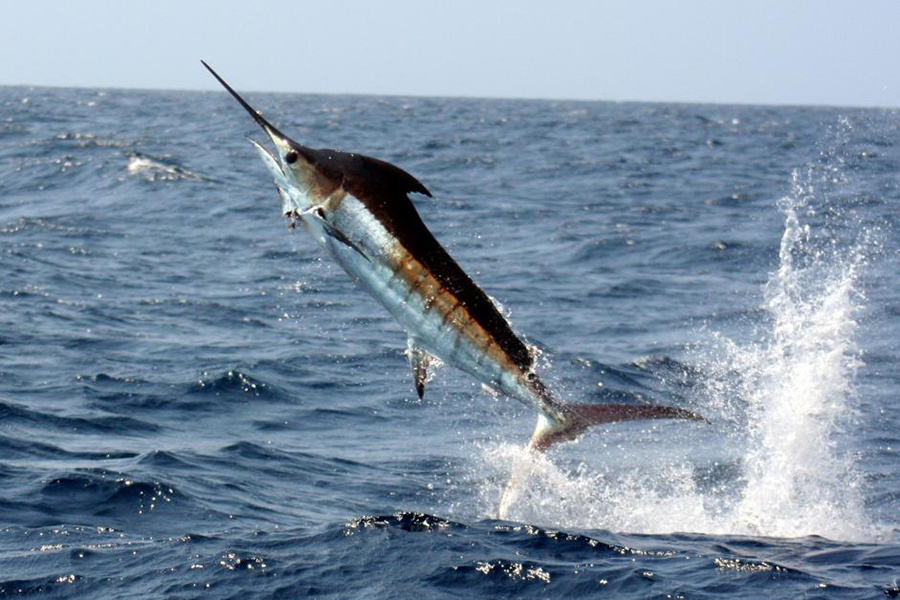
Sea Wonder: Blue Marlin

Pacific Blue Marlin Photo Credit: NOAA
Known as one of the ocean’s largest fish, the blue marlin (Makaira nigricans) is also one of the most sought-after big game fishes in the entire world! People often confuse them for swordfish and sailfish (though all three are part of the billfish family) due to their similarities, but the blue marlin is one of the ocean’s strongest and fastest predators.
Appearance
The blue marlin is one of the most recognizable fish in the ocean. They are known for their silver underside and striking cobalt blue along their backs. The spear-shaped bill that grows from the front of its head is one of the blue marlin’s most distinguishing features and what makes people confuse them for swordfish. The fin atop the marlin’s back is taller at the front and slopes downward, though it resembles the tall, sail-like fins of sailfish, another member of the billfish family.
This species experiences sexual dimorphism, which means one sex has different characteristics than the other, features that can include size, coloration, or presence/absence of features. For the blue marlin, females are much larger than males (we’re talking three to four times the size of males!), reaching lengths of up to 16 feet and weighing nearly 2,000 pounds. Males generally grow slower than females and do not weigh more than 400 pounds when fully grown.
